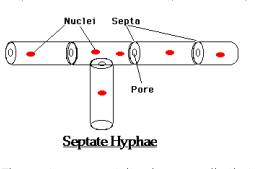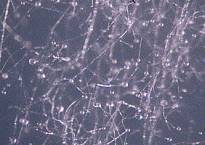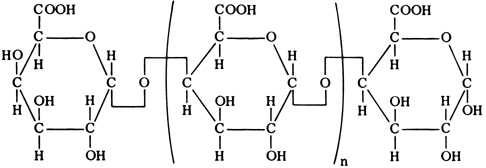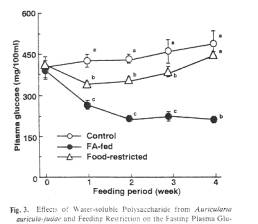4.7 Potential of Fungi Used in Traditional Chinese Medicine: Auricularia (contributed by Anna Bonell , 2001)
Abstract
The concepts and beliefs of Chinese Medicine are collated, discussed and compared to the Western approach to treatment. Fungi and their innate properties are briefly examined and their structure summarised. The reports available on Auricularia are studied and the scientific evidence separated, dissected and investigated. Then the claims made of Auricularia are considered in conjunction with the evidence from scientific reports. This enables an exploration as to their reliability.
The distinct absence of any scientific experimentation is considered in relation to both its reported healing properties and the recent competition or even possible replacement by more Western remedies. There appears to be a great disparity between the bold claims made in the literature and any evidence of its use. However the distinct decline in its prominence in the market place could easily be attributed to its perception as a fashionable treatment waning, and thus lead directly to its subsequent replacement by more popular remedies. Whatever potential Auricularia may hold, its continued study seems unlikely when contemplating the combination of its diminished use and the progression towards Westernisation throughout China.
Introduction
Chinese medicine is based on treating the body and mind as a miniature universe, in which every individual is unique and where health depends upon the balance of yin and yang. An imbalance in these two forces is thought to lead to disease, whereas a balance leads to good health and good fortune. Yin represents quiet, substance, night and water, whereas Yang represents noise, function, day and fire [1]. The two are opposite forces and thus if you have one, you necessarily must have the other. These two forces are not stationary but are continuously fading into one another, just as night becomes day [2].
These forces are present in the organs of the body, but not necessarily in equal amounts. The Yin is present as the organ’s substance, the histological structures and nutrients, whereas Yang is present as its functional abilities. Each of the organs of the body has an element of Yin and of Yang. The kidney, for example, is said to be more Yin, whilst the liver is more Yang [2]. Yin and Yang exist in the body as a fluctuating balance that has to be maintained in order to remain healthy.
Traditional Chinese Medicine also states that the body is organized into five functional systems, the kidney, heart, spleen, liver and lung systems. These systems govern particular tissues, activities and mental abilities. For example it is said that the kidney network is responsible for fluid metabolism, as well as storing the “Essence” which is responsible for reproduction, growth and regeneration [3].
Chinese Medicine has developed over the centuries by a sort of trial and error where the Chinese people used themselves as guinea pigs to see which remedies work and which did not. Although this is true, the understanding of the body and the way it functions is phenomenal considering their knowledge comes from writings dating from as long as 2000 years ago.
In contrast to this idea of balancing forces to maintain health, the Western method of looking at the body takes it as something that is made ill by viruses, bacteria and other external influences. The treatment of these things is reliant on understanding the mechanism by which they work on a molecular level and trying to rectify it there. The body is seen very much as something composed of proteins transcribed from DNA, something that can be controlled and understood down to the tiniest detail. This leads to a science that is very precise and relies on accurate readings being taken and everything being justified and not assumed.
An overview of fungi
This study is looking at the specific use of Auricularia auricula in Chinese medicine and so it is necessary to look briefly at an overview of fungi and how they grow and function. Fungi are simple organisms that contain no chlorophyll and exist as saprotrophs (secreting enzymes onto the dead or decaying matter it wishes to assimilate, and so externally digesting it and then absorbing the products) or mutualistic organisms or parasites of plants and animals [4]. Fungi are eukaryotic organisms with a thin cell wall made up of chitin a protein also found in the exoskeleton of insects. They grow through and within the substrate on which they are feeding and so there is large surface area for the secreted digested enzymes to work on. Fungi consist of mycelium and fruiting bodies. The mycelium is made up of hyphae which may or may not be divided by septa [5, 6].
 |
 |
| Fig. 1. Auricularia does have septa which divide the filaments at right angles to the long axis of the hypha. | Fig. 2. Micrograph of a fungal mycelium [from University of California Museum of Paleontology website]. |
The nine zones of the fruiting body of Auricularia
The fruit body of Auricularia, which is the ultimate source of whatever medicinal value the fungus may possess, is a complex structure that has been characterised into a series of zones:
- 1. Zona Pilosa: the outermost layer of the fruiting body that consists only of hairs.
- 2. Zona Compacta: the layer from which the hairs arise, made up of very dense hyphae about 3-5 mm deep and found in all fungi.
- 3. Zona Subcompacta Superioris: this layer is composed of loosely arranged hyphae about 3-7 mm and is found in all species of Auricularia.
- 4. Zona Laxa Superioris: this layer consists of relatively loose hyphae with a reticular arrangement and many anastomoses, they vary in width of about 3-8 mm.
- 5. Medulla: this zone is not always present, but consists of parallel uniform hyphae, equidistant from the hymenial and abhymenial surfaces.
- 6. Zona Laxa Inferioris: Only present in those species with a medulla, and is similar to the Zona Laxa Superioris.
- 7. Zona Intermedia: Found in species without the medulla, and is a combination of the Superioris and Inferioris zones. Found in the central region of the fruit body.
- 8. Zona Subcompacta Inferioris: This layer is found in all species and has the same characteristics as the zona subcompacta superioris.
- 9. Hymenium: a gelatinous layer found on the underside of the pileus. The cylindrical basidiospores penetrate the tough membranous layer [8].
The genus Auricularia belongs to the Family Auriculariaceae, Order Auriculariales, Class Agaricomycetes, Subphylum Agaricomycotina, Phylum Basidiomycota [9].
Habitat
Auricularia grows in groves of trees, on logs and dead branches. It is a gelatinous, ear-shaped, shallow disk that is soft when fresh and hard when dry [8]. Its stalk is absent or just visible and its spores are 12-18 × 4-8 mm. The total production world wide of Auricularia spp. in 2002 exceeded 1.5 million tonnes (fresh weight) which represents 13 % of the total cultivated mushroom supply world wide [10].
Auricularia exists in a mutualistic relationship with the plants and trees on which it grows, and is known as a mycorrhizal fungus [11].
Auricularia contains two kinds of β-D-glucans and an acidic heteropolysaccharide along with many other things [12]. These components, or derivatives of them, could be the basis for the medicinal value of the fungus, if it has any.
Basidiomycete f ungi usually reproduce by spores, producing between a few billion to several trillion within their fruit bodies. Spores are formed usually by the union of two nuclei within specialized cells called basidia that then undergo meiosis develop four haploid spores that contain a different combination of genes than the parents [13].
Medicinal properties
Fungi like Auricularia produce many different polysaccharides, which have a variety of functions in the fruit body, and these polysaccharides are sometimes found to stimulate the immune system in humans or in some cases cause the production of interferon and interleukins that then stop the proliferation of cancer cells. They have also been found to have antitumor, cardiovascular and hypocholesterolemia, antiviral, antibacterial and antiparasitic effects [14].
Auricularia has been used for thousands of years for the treatment of various ailments. It is prepared in a different way for each different group of treatments. For example, hypertension, vascular sclerosis and ophthalmic bleeding are all in one group and rheumatic pains in legs and lumbago are in another. Auricularia has been used over the centuries, to treat weakness after childbirth, cramp and numbness; for pains from injuries, obstruction in arteries and veins, numbness and tetany; for malignant dysentery, piles, and enteritis; for menorrhagia and leucorrhoea; for gastric disorder causing nausea and excessive phlegm; for piles in the aged which will not heal [15]. There must be something that is similar between all these diseases and problems that one mushroom can help with all of them, that is if it truly can. Or maybe there are a few similar elements which different components of Auricularia treat. Whichever it is the research should make it clear if any of these cures have any proof at all. Also it seems that it is necessary to look at the different networks described in the traditional Chinese system to understand why it is claimed to do so much and whether the networks can explain the diversity of its functions.
Animal test: hypoglycaemic and hypocholesterolemic abilities of Auricularia
The two things that have been tested in this miracle-curing mushroom are its hypocholesterolemic effect, and its hypoglycaemic effect. There are reports on its effectiveness in reducing the blood glucose levels in KK-Ay mice that are genetically obese and have diabetic syndromes such as, hyperglycemia, hyperinsulinemia, glucosuria and severe insulin resistance. One study limited its attention to the water-soluble polysaccharide extracted from the fruiting bodies of Auricularia [16] and the other examined three different groups of polysaccharides all found in the fruiting body; a mixture of crude polysaccharides, acidic polysaccharide fractions, and neutral polysaccharide fractions [17].
 |
| Fig. 3. Pectic acid is one of the two families of polysaccharides, the other being hemicellulose [18]. |
The first study, on water-soluble polysaccharide, found that polysaccharide extract at the dosage of 3% could reduce the fasting plasma glucose concentration (Fig. 4), and also reduced the urinary glucose excretion, and the high serum glucose and insulin after feeding (Fig. 5).
 |
 |
| Fig. 4. Effects of water-soluble polysaccharides from Auricularia and feeding restrictions on the fasting plasma glucose [from reference 16]. |
Fig. 5. Effect of water-soluble polysaccaride from Auricularia and feeding restriction on the plasma glucose response to the intraperitoneal glucose tolerance test [from reference 16]. |
The other report found that the crude polysaccharide improved glucose tolerance to intraperitoneal glucose loading, but did not affect the non-fasting insulin level; that the acidic polysaccharide had no beneficial effects; and that neutral polysaccharides showed dose dependent effects on lowering the fasting and nonfasting glucose and insulin but it did not affect the glucose tolerance.
Discussion
The evidence from these articles indicates that there is the potential for Auricularia to alleviate the symptoms of non-insulin dependent diabetes. In this disease, the suffer has diabetes because the receptors for insulin on the target cells are desensitized or alternatively there are not enough of them, and so the sufferer has a high blood glucose level but also a high blood insulin level. It is hypothesized that Auricularia can help reduce the blood glucose levels by reducing the emptying time of the stomach. When the polysaccharides found in Auricularia are mixed with water they form a very viscous solution. This increased viscosity could possibly slow the rate of emptying of the gastric contents, decrease the motility of the stomach and the small intestine and so result in a decreased rate of absorption of carbohydrates. As an increase in the rate of glucose absorption has been shown to result in an increase in the speed at which insulin resistance occurs, then it seems logical to think that perhaps the slower the glucose is absorbed the less likely insulin resistance is to develop. Whatever the cause, the polysaccharides lead to a decrease in blood glucose levels and so a decrease is the blood insulin levels and also a decrease in the glucose concentration in the urine.
Auricularia and hypercholesterolemea
The other report looks at the effect of Auricularia on rats fed a hypercholesterolemic diet with or without the addition of Auricularia [19]. The effect after four weeks was a significant decrease in serum cholesterol concentration (17%) and a decrease in the serum LDL cholesterol level (by 24%). The HDL concentrations were not affected and neither was the total liver cholesterol. However the fecal neutral steroids and bile acids were both increased by 39% and 46% respectively. The conclusion of this report is that Auricularia showed hypocholesterolemic activity in the rats. Why Auricularia should do this is unclear but it must in some way stimulate the production of bile acids and fecal neutral steroids and so use up the excess cholesterol in that way, but the actual mechanism of action is not clear.
This property of Auricularia could lead to its use as a preventative for the problems of vascular sclerosis since the likelihood of getting a plaque developing is greatly increased by high levels of LDLs in the blood. The fact that it does not alter the HDLs is also beneficial as HDLs help soak up cholesterol deposits in the blood and so have anti-plaque forming properties as well.
Conclusions
The scientific proof needed to establish that Auricularia has definite medicinal power is lacking but it can be said that some experiments have been done and it is effective in lowering cholesterol and glucose levels in the blood of both rats and mice respectively. The hypercholesterolemic effect of this mushroom could be why it is said to be a good treatment of obstruction in arteries and veins, vascular sclerosis and hypertension. Since having high levels of cholesterol in the blood stream leads to more deposits in the arteries and veins and can lead to atherosclerosis and so obstruction of the veins and arteries. One of the causes of hypertension is narrowing of the renal arteries and so by decreasing the cholesterol levels in some way, then possibly the narrowing could be put on hold. The effects of Auricularia as shown from the evidence in this report have not been extensively tested [20]. To safeguard against the possibility that the search engine was not returning a representative sample of research papers I searched for two other medicinal mushroom, Lentinula edodes and Ganoderma. The search resulted in 44 and 42 articles being displayed respectively for these, compared with only 2 dealing with Auricularia. This shows that not much research has been done on this mushroom and so stimulated a visit to the nearest Chinese Medicine shop in Manchester, to find out their experience in the use of this mushroom and whether it was popular (panel following).
Interview at Dr. & Herbs (Market Way, The Arndale Centre, Manchester): On entering the shop, which is set along one of the sides of the staircase at the upper floor of the Arndale Centre in Manchester, I noticed the tidy array of jars full of dried herbs and spices lining the wall behind the counter. The shop assistant was very helpful and answered my questions as best she could. “I am doing a review on the use of Auricularia and I hoped you could tell me what you use it for?”
“What were they taking it for?”
“So you never use it even as part of a remedy?”
“Do you know what they use it for in China?”
|
This experience goes some way towards explaining the lack of research that has been done on this mushroom, because if no one is using it any more then there seems to be little call for any experiments to be done. Why it should have gone out of use is difficult to understand considering its position in traditional treatment of all the diseases it is supposed to be able to help and cure. This may be explained in someway by considering the changes to lifestyle that has come about with the modernisation of China. I suppose that, as people in China progress to a more Western like society, complete with western science and technology, they will necessarily begin to shift their perceptions of the way the body and world function. This would be simply due to having a different education with the emphasis being on different things. I do not know if this is a good thing or a bad thing, who can say whether our idea in the West is superior to the more holistic approach of the far East.
The traditional Chinese medical system and its five different networks did little to help the confusion of the diversity of the treatments and cures claimed of this mushroom. There seemed to be no relationship between the symptoms it was claimed to cure and the networks and so I suppose that maybe there are many complicated systems in their medical practices that I have not found out about and that possibly there is an explanation in the old Chinese literature. Alternatively, although some evidence points towards the fact that it may have some curative effects I was led to consider the possibility of the placebo affect having an impact on the use of it for so long. Research has been done by Ross and Olson (1981) on patients’ expectations and how these influence the process of becoming well again. It is known that changes in the state of an illness is almost always attributed to the drug that is being taken whether it is responsible or not [21]. These findings indicate that perhaps the claims made of Auricularia are more to do with what people wish to believe compared to that which is actually true.
The objective behind this report was to look at the evidence that is available about Auricularia and determine whether there is any scientific proof supporting the claims made of it. It is clear that there is little experimental evidence as to whether it contains the ability to treat those diseases it is reported to cure, but it is impossible to even speculate as to what experiments were done in the past in China. This report seems to suggest that the lack of scientific analysis into Auricularia is due to decreased popularity rather than any ridiculous claims for its properties. This report has shown that although these herbs and mushrooms may have beneficial attributes it is unwise to rely on them if no tests and experiments prove that there is science that can back up the beliefs.
The evidence gathered on Auricularia shows that it may have some potential in the management of non-insulin dependent diabetes and that it could possibly be a preventative for atherosclerosis. This however is assuming a lot about it, as it has only shown these attributes in respect to rats and mice and the assumption that the same is true of humans is not correct. No matter what the true medicinal value of Auricularia may be, it appears that its genuine properties will never be discovered unless further scientific investigation is undertaken [22].
References
1. Lewith, G. T. (1982). The conceptual basis of traditional Chinese medicine [excerpted from Acupuncture - Its Place in Western Medical Science, HarperCollins Canada/Thorsons Publishing Group] on the healthy.net website at these URLs: http://www.healthy.net/asp/templates/article.asp?id=1278 and http://www.healthy.net/scr/article.aspx?Id=1278&xcntr=2.
2. Lewith, G. T. (1984). The basic principles of Chinese traditional medicine [excerpted from Modern Chinese Acupuncture, HarperCollins Canada/Thorsons Publishing Group] on the healthy.net website at this URL: http://www.healthy.net/asp/templates/article.asp?id=1707.
3. Beinfield, H. & Korngold, E. (1991). Chinese medicine: how it works. On the healthy.net website at this URL: http://www.healthy.net/asp/templates/article.asp?PageType=Article&ID=428.
4. Moore, D., Robson, G.D. & Trinci, A.P.J. (2011). 21st Century Guidebook to Fungi. Cambridge, UK: Cambridge University Press. ISBN: 9780521186957. URL: http://www.cambridge.org/gb/knowledge/isbn/item6026594/?site_locale=en_GB.
5. Clegg, C.J. & Mackean, D.G. (2000). Advanced Biology. Principles and Applications. Hodder Education. ISBN-10: 0719576709, ISBN-13: 978-0719576706. URL: http://www.amazon.co.uk/Advanced-Biology-Principles-Applications-Clegg/dp/0719576709.
6. Shaw, M. (2005). Laboratory 6: Unicellular and filamentous levels of organization. On the University of Manitoba website at this URL: http://www.umanitoba.ca/faculties/science/biological_sciences/lab6/biolab6_3.html#Fungi.
7. Waggoner, B. & Speer, B. R. (1994). Fungi: more on morphology. University of California Museum of Paleontology website at this URL: http://www.ucmp.berkeley.edu/fungi/fungimm.html.
8. Cheng, S. & Tu, C.C. (1978). Auricularia spp. In: The Biology and Cultivation of Edible Mushrooms. (S.T. Chang & W.A Hayes, eds), pp. 605-625. New York : Academic Press Inc. ISBN-10: 0121680509, ISBN-13: 9780121680503.
9. Moore, D., Robson, G.D. & Trinci, A.P.J. (2011). 21st Century Guidebook to Fungi. Cambridge, UK: Cambridge University Press. ISBN: 9780521186957. URL: http://www.cambridge.org/gb/knowledge/isbn/item6026594/?site_locale=en_GB.
10. Chang, S.-T. (2008). Overview of mushroom cultivation and utilization as functional foods. In: Mushrooms as Functional Foods (ed. P.C.K. Cheung), pp. 1–33. Hoboken, NJ: Wiley. ISBN: 9780470054062.
11. Waggoner, B. & Speer, B. R. (1994). Fungi: life history and ecology. University of California Museum of Paleontology website at this URL: http://www.ucmp.berkeley.edu/fungi/fungilh.html.
12. Sone, Y. Kakuta, M. & Misaki, A. (1978). Isolation and characterisation of polysaccharides of “Kikurage,” fruit body of Auricularia auricula-judae. Journal of Agricultural and Biological Chemistry, 42: 417-425. PDF.
13. Moore, D., Robson, G.D. & Trinci, A.P.J. (2011). 21st Century Guidebook to Fungi. Cambridge, UK: Cambridge University Press. ISBN: 9780521186957. URL: http://www.cambridge.org/gb/knowledge/isbn/item6026594/?site_locale=en_GB.
14. Wasser, S.P. & Weis, A.L. (1999). Therapeutic effects of substances occurring in higher basidiomycetes mushrooms: A modern perspective. Critical Reviews in Immunology, 19: 65-96. PDF.15. Ying, J.-Z., Mao, X.-L. & Xu, Y.C. (1987). Icones of Medicinal Fungi from China. Science Press, Bejing, China and Lubrecht & Cramer, Ltd. ISBN-10: 7030001958, ISBN-13: 9787030001955.
16. Yuan, Z., He, P., Cui, J. & Takeuchi, H. (1998). Hypoglycemic effect of water-soluble polysaccharide from Auricularia auricula-judae Quel. on genetically diabetic KK-Ay Mice. Bioscience, Biotechnology & Biochemistry, 62: 1898-1903. DOI: http://dx.doi.org/10.1271/bbb.62.1898. PDF.
17. Yuan, Z., He, P. & Takeuchi, H. (1998). Ameliorating effects of water-soluble polysaccharides from Woody Ear (Auricularia auricula-judae Quel.) in genetically diabetic KK-Ay Mice. Journal of Nutritional Science & Vitaminology, 44: 829-840.
18. Anonymous (2005). Metabocard for Pectic acid (HMDB03363). Human Metabolome Database Version 2.5 at this URL: http://www.hmdb.ca/metabolites/HMDB03363.
19. Cheung, P.C.K. (1996). The hypocholesterolemic effect of two edible mushrooms: Auricularia auricula (tree-ear) and Tremella fuciformis (white jelly-leaf) in hypercholesterolemic rats. Nutrition Research, 16: 1721-1725. DOI: http://dx.doi.org/10.1016/0271-5317(96)00191-1.
20. Guillamóna, E., García-Lafuentea, A., Lozanoa, M., D'Arrigoa, M. Mauricio, Rostagnoa, A., Villaresa, A. & Martínez, J.A. (2010). Edible mushrooms: role in the prevention of cardiovascular diseases. Fitoterapia, 81: 715-723. DOI: http://dx.doi.org/10.1016/j.fitote.2010.06.005.
21. Ross, M. & Olsen, J.M. (1981). An expectancy attribution model of the effects of placebos. Psychological Reviews, 88: 408-437. DOI: http://dx.doi.org/10.1037/0033-295X.88.5.408.
22. Smith, J.E., Rowan, N.J. & Sullivan, R. (2002). Medicinal Mushrooms: their therapeutic properties and current medical usage with special emphasis on cancer treatments. A report produced for Cancer Research UK. URL: http://sci.cancerresearchuk.org/labs/med_mush/med_mush.html. Chapter PDF. Complete PDF.
Updated December 7, 2016
